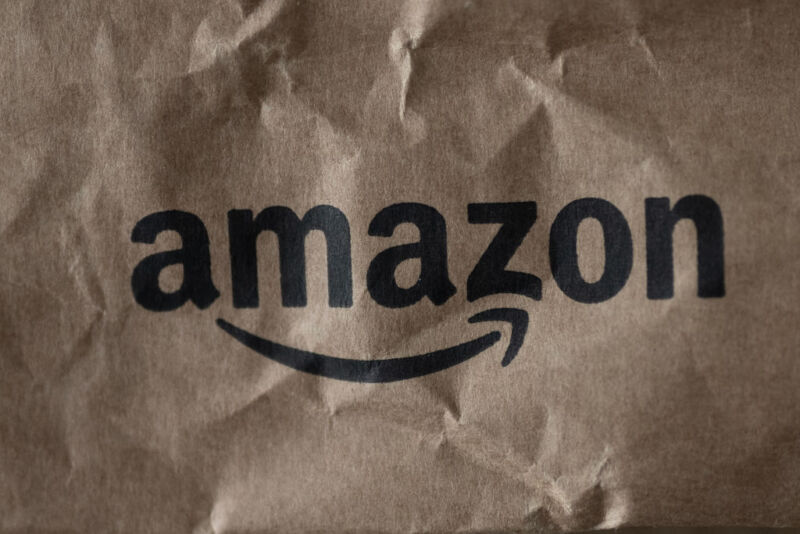
Amazon failed to adequately alert more than 300,000 customers to serious risks—including death and electrocution—that US Consumer Product Safety Commission (CPSC) testing found with more than 400,000 products that third parties sold on its platform.
The CPSC unanimously voted to hold Amazon legally responsible for third-party sellers’ defective products. Now, Amazon must make a CPSC-approved plan to properly recall the dangerous products—including highly flammable children’s pajamas, faulty carbon monoxide detectors, and unsafe hair dryers that could cause electrocution—which the CPSC fears may still be widely used in homes across America.
While Amazon scrambles to devise a plan, the CPSC summarized the ongoing risks to consumers:
If the [products] remain in consumers’ possession, children will continue to wear sleepwear garments that could ignite and result in injury or death; consumers will unwittingly rely on defective [carbon monoxide] detectors that will never alert them to the presence of deadly carbon monoxide in their homes; and consumers will use the hair dryers they purchased, which lack immersion protection, in the bathroom near water, leaving them vulnerable to electrocution.
Instead of recalling the products, which were sold between 2018 and 2021, Amazon sent messages to customers that the CPSC said “downplayed the severity” of hazards.
In these messages—”despite conclusive testing that the products were hazardous” by the CPSC—Amazon only warned customers that the products “may fail” to meet federal safety standards and only “potentially” posed risks of “burn injuries to children,” “electric shock,” or “exposure to potentially dangerous levels of carbon monoxide.”
Typically, a distributor would be required to specifically use the word “recall” in the subject line of these kinds of messages, but Amazon dodged using that language entirely. Instead, Amazon opted to use much less alarming subject lines that said, “Attention: Important safety notice about your past Amazon order” or “Important safety notice about your past Amazon order.”
Amazon then left it up to customers to destroy products and explicitly discouraged them from making returns. The e-commerce giant also gave every affected customer a gift card without requiring proof of destruction or adequately providing public notice or informing customers of actual hazards, as can be required by law to ensure public safety.
Further, Amazon’s messages did not include photos of the defective products, as required by law, and provided no way for customers to respond. The commission found that Amazon “made no effort” to track how many items were destroyed or even do the minimum of monitoring the “number of messages that were opened.”
Amazon still thinks these messages were appropriate remedies, though. An Amazon spokesperson told Ars that Amazon plans to appeal the ruling.
“We are disappointed by the CPSC’s decision,” Amazon’s spokesperson said. “We plan to appeal the decision and look forward to presenting our case in court. When we were initially notified by the CPSC three years ago about potential safety issues with a small number of third-party products at the center of this lawsuit, we swiftly notified customers, instructed them to stop using the products, and refunded them.”
Amazon’s “sidestepped” safety obligations
The CPSC has additional concerns about Amazon’s “insufficient” remedies. It is particularly concerned that anyone who received the products as a gift or bought them on the secondary market likely was not informed of serious known hazards. The CPSC found that Amazon resold faulty hair dryers and carbon monoxide detectors, proving that secondary markets for these products exist.
“Amazon has made no direct attempt to reach consumers who obtained the hazardous products as gifts, hand-me-downs, donations, or on the secondary market,” the CPSC said.
For years, Amazon unsuccessfully tried to argue that it was not required to issue a recall because it was allegedly not legally considered to be a distributor under the Consumer Product Safety Act (CPSA). The commission was not persuaded, however, by Amazon’s argument that it was merely a “logistics provider” for third-party sellers, which would’ve given Amazon safe harbor from product liability under the consumer safety law. Rather than simply providing logistics, however, the CPSC concluded that “Amazon controls the entire sale process.”
“The substantial record before us establishes Amazon’s extensive control over these products, beginning with receipt of a Fulfilled by Amazon participant’s products at an Amazon distribution center, and storage of this inventory until it is purchased by and shipped to a consumer,” the Comission said, concluding that “Amazon cannot sidestep its obligations under the CPSA simply because some portion of its extensive services involves logistics.”
After the CPSC’s testing, Amazon stopped allowing these products to be listed on its platform, but that and other remedies were deemed insufficient. So, over the next two months, to protect the public, Amazon must now make a plan to “provide notice of the product hazards to purchasers and the public” and “incentivize the removal of these hazardous products from consumers’ homes,” the CPSC ordered.























+ There are no comments
Add yours